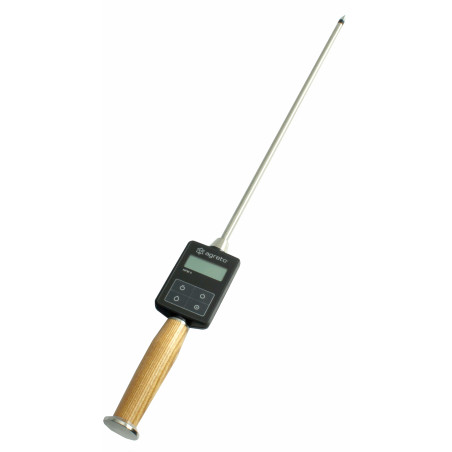Heat stress accounts for millions of dollars in losses for swine producers worldwide, and this problem is commonly due to high environmental temperatures, which usually persist for several months along the year in warm countries. In addition, climate change is causing global warming, with a higher frequency and duration of heat waves in warm countries and a rise in maximum temperatures and longer summers in colder ones.
Methods: The aim of the present study was to determine and evaluate cortisol and cortisone in hair as indicators of thermal stress in growing pigs reared under high environmental temperatures. The study was carried out in two independent batches of commercial crosses of Lean Duroc and Pietrain in trials 1 and 2, respectively, during the growing period (from 40 to 100 kg; 81 days in trial 1 and 77 days in trial 2) in the same commercial farm in Spain during the summers of 2020 and 2021. In both cases, four rooms were used. In Trial 1, Room 1 had cooling and 11 pigs per pen; Room 2 had no cooling and 13 pigs per pen; Room 3 had no cooling and 11 pigs per pen, and Room 4 had cooling and 13 pigs per pen. In Trial 2, Rooms 2 and 3 had cooling and rooms 1 and 4 had no cooling, and all of them had 13 pigs per pen. For a better assessment of thermal conditions in pigs, instead of assessing just temperatures or humidity, the combination of both in an index (THI) was considered.

Results: Mean THI value was higher in rooms without cooling systems (75.0 trial 1; 74.9 trial 2) than with them (71.3 trial 1; 71.7 trial 2). A total of four pens per room (16 in total) was selected for analysis of hair corticoids and all pigs inside were sampled at the end of the study. Fifty percent of the pigs were males (castrated and intact in trial 1 and 2, respectively) and 50% females. In total, 44, 52, 44, and 52 pigs, respectively, were sampled in four rooms from the first trial and 52 for each of four rooms in Trial 2. Cortisol concentrations in hair did not show any significant change in relation to cooling-non-cooling in any trial. However, hair cortisone concentration was 172.3 pg./mg and 105.8 pg./mg less in pigs housed with cooling systems compared to those without them in Trial 1 and 2, respectively. In addition, the cortisone/cortisol ratio, which is an estimator of the activity of 11β-hydroxysteroid dehydrogenase (11β-HSD) type 2, was also greater in rooms without cooling than in rooms with cooling in both trials. In relation to the sex effect, the results showed greater levels in females than in castrated males both in cortisone and the cortisol/cortisone ratio while cortisol hair levels were greater in intact males than in females.
Conclusion: The use of cortisone and the estimation of 11β-HSD type 2 activity in hair is recommended to evaluate the chronic stress produced by high environmental conditions in pigs instead of using hair cortisol concentrations alone.
Escribano D, Contreras-Jodar A, López-Arjona M, Cerón JJ, Fàbrega E, Aymerich P, Dalmau A. Changes in cortisol and cortisone in hair of pigs reared under heat stress conditions. Frontiers in Veterinary 2023; 10. https://www.frontiersin.org/articles/10.3389/fvets.2023.1156480




